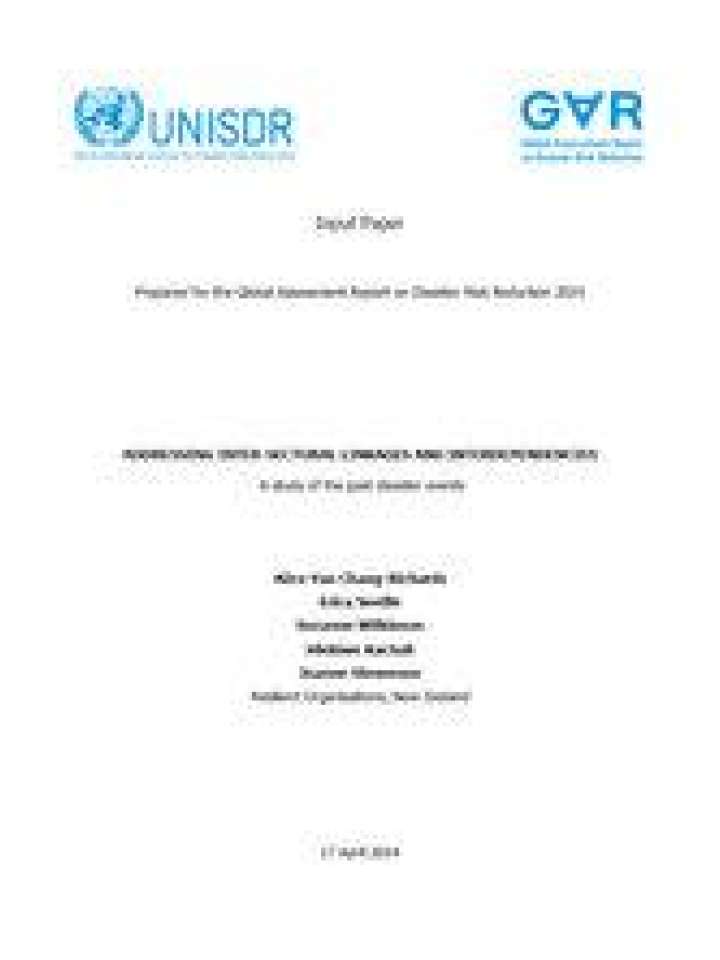Addressing inter-sectoral linkages and interdependencies
This input paper for the 2015 Global Assessment Report explores how public and private agencies can help protect the country’s most vulnerable economic activities and productive sectors to reduce the overall impacts of disasters. The publication presents case studies from Australia, New Zealand, Japan, China and Canada.
The conclusions of the paper are as follows (p. 22-23):
- Business continuity plans and public resources for rebuilding business resilience are critical for businesses to prepare for and recover from disasters.
- It is in the interests of organisations to have prior readiness and staff-support measures that provide
benefits to organisations once a disaster happens. - A standardised business continuity planning tool can be a vehicle through which disaster risk reduction elements can be included.
- The capability of financial, technical and specialist support, especially support for targeted vulnerable sectors such as (small- to medium-sized enterprises) SMEs is critical to the success of (disaster risk reduction) DRR incorporation activities.
- The planning and development of business resilience toolkits should be developed in order to integrate both available resources and pre-existing mechanisms.
- It is important that the concept of organisational resilience and associated public and private assistance are effectively communicated to organisations and individuals.
This document is an input paper of the 2015 Global Assessment Report on Disaster Risk Reduction.
Explore further
Hazards
Earthquake
Country and region
Australia
Canada
China
Japan
New Zealand
